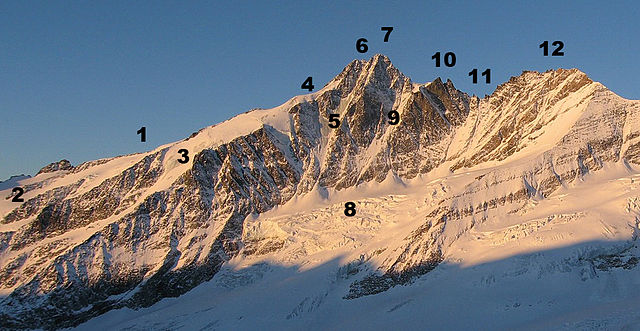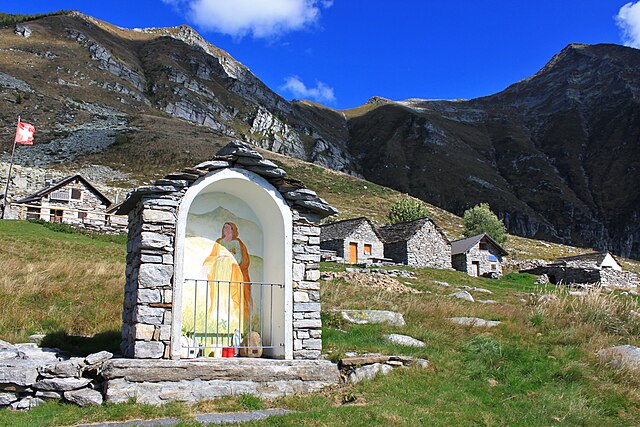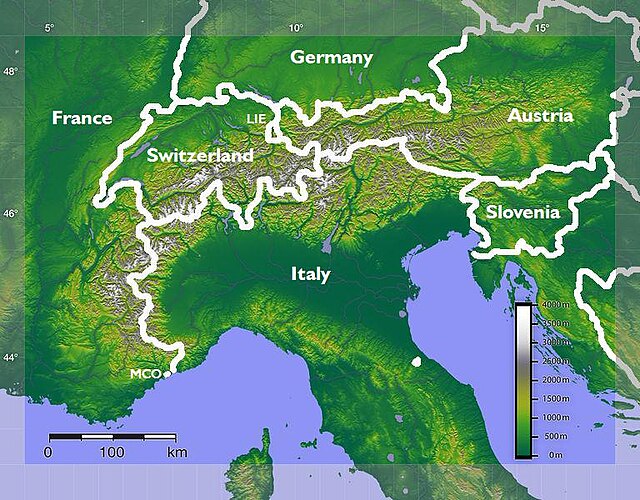The Grossglockner, or just Glockner, is, at 3,798 metres above the Adriatic (12,461 ft), the highest mountain in Austria and the highest mountain in the Alps east of the Brenner Pass. It is part of the larger Glockner Group of the Hohe Tauern range, situated along the main ridge of the Central Eastern Alps and the Alpine divide. The Pasterze, Austria's most extended glacier, lies on the Grossglockner's eastern slope.
Großglockner from behind the glass panorama tower
The Grossglockner from the southwest: 1. Glocknerwand, 2. Untere Glocknerscharte, 3. Teufelshorn (left) and Glocknerhorn (right), 4. Teischnitzkees, 5. Grossglockner, 6. Kleinglockner, 7. Stüdlgrat, 8. Ködnitzkees, 9. Adlersruhe
The Grossglockner from the northeast: 1. Adlersruhe, 2. Hofmannskees, 3. Kleinglocknerkees, 4. Glocknerleitl, 5. Pallavicinirinne, 6. Kleinglockner, 7. Grossglockner, 8. Glocknerkees, 9. Berglerrinne, 10. Glocknerhorn (left) and Teufelshorn (right), 11. Untere Glocknerscharte, 12. Glocknerwand
Klokner, 1782 engraving by Belsazar Hacquet
The Alps are the highest and most extensive mountain range that is entirely in Europe, stretching approximately 1,200 km (750 mi) across eight Alpine countries : Monaco, France, Switzerland, Italy, Liechtenstein, Germany, Austria and Slovenia.
Satellite view of the Alps
The Dolomites (Italy) are a UNESCO World Heritage Site.
An "Alp" refers to a high elevation pasture frequented only in summer. It often includes several huts and small places of worship (here the Alpe Bardughè in Ticino).
The Alps extend in an arc from France in the south and west to Slovenia in the east, and from Monaco in the south to Germany in the north.








